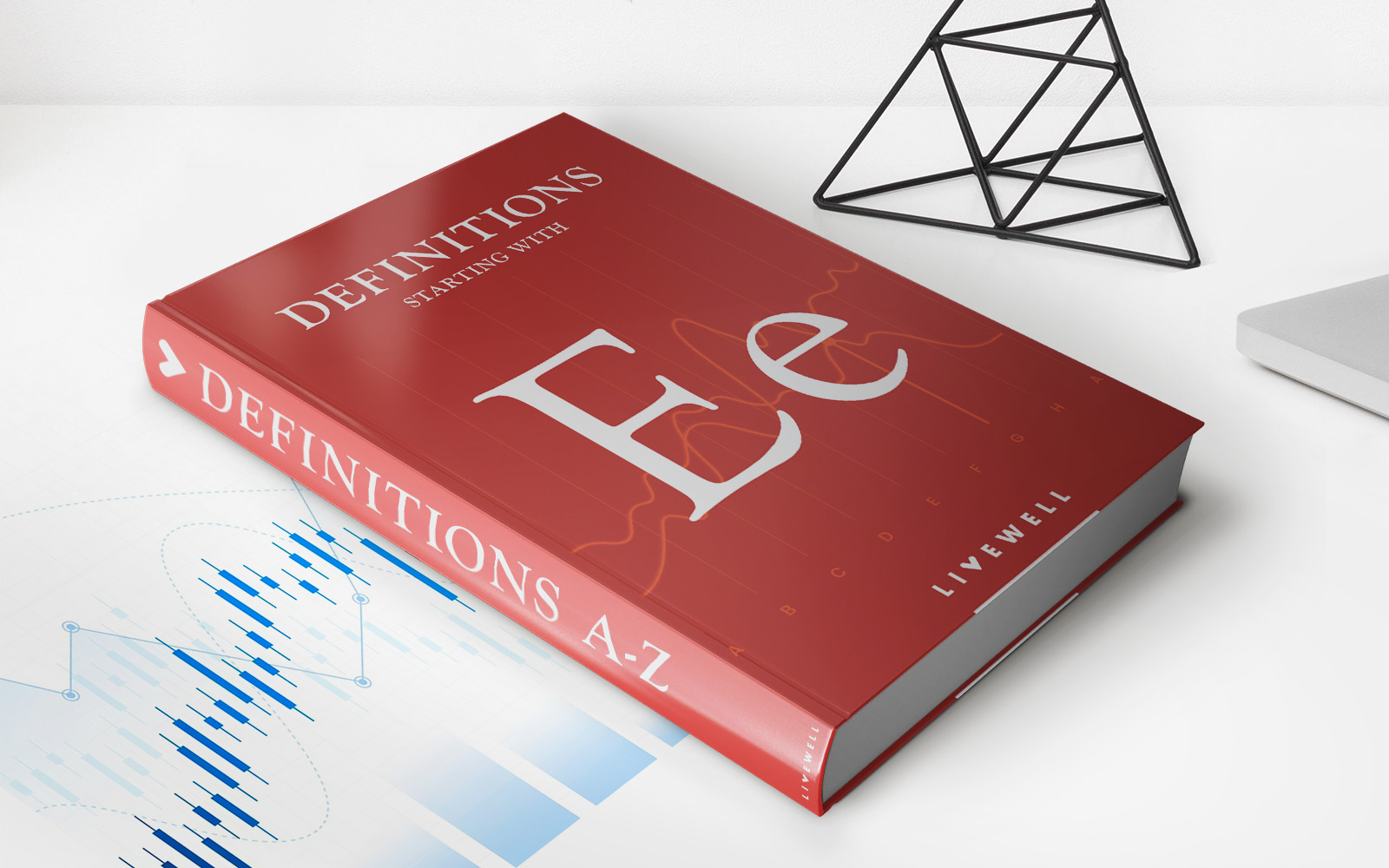Home>Finance>Why Is The Current Balance Different From The Statement Balance


Finance
Why Is The Current Balance Different From The Statement Balance
Published: March 2, 2024
Discover why your current balance may vary from your statement balance and learn how to manage your finances effectively. Explore the differences in finance.
(Many of the links in this article redirect to a specific reviewed product. Your purchase of these products through affiliate links helps to generate commission for LiveWell, at no extra cost. Learn more)
Table of Contents
Introduction
Understanding the nuances of financial statements and account balances is crucial for effectively managing personal or business finances. One common source of confusion for many individuals is the disparity between the current balance and the statement balance in their bank accounts. This incongruity often leads to questions and concerns about the accuracy of the information provided by financial institutions.
In this comprehensive guide, we will delve into the reasons behind the differences between the current balance and the statement balance. By shedding light on this topic, we aim to equip readers with the knowledge needed to navigate their finances with confidence and clarity.
Exploring the intricacies of these two types of balances is essential for anyone seeking to gain a deeper understanding of their financial standing. Whether you are a seasoned financial expert or someone who is just beginning to take charge of their financial well-being, this article will provide valuable insights into the significance of monitoring both the current and statement balances. Join us as we unravel the mysteries behind these essential financial indicators and explore strategies for effectively managing them.
Understanding Current Balance and Statement Balance
Before delving into the factors that contribute to the differences between the current balance and the statement balance, it’s essential to grasp the distinct meanings of these two financial terms.
The current balance represents the total amount of funds in an account at a given moment. This figure is dynamic, constantly changing as transactions such as deposits, withdrawals, and purchases occur. It reflects the real-time financial status of the account, providing an up-to-the-minute snapshot of available funds.
On the other hand, the statement balance is the balance reported by the financial institution on a specific date, typically at the end of a billing cycle. This balance is documented in the account statement, summarizing the transactions and their cumulative effect on the account over a set period.
While the current balance offers a real-time view of available funds, the statement balance serves as a historical record of account activity over a designated period, usually a month. Understanding the distinction between these two balances is crucial for maintaining financial awareness and making informed decisions regarding spending, saving, and budgeting.
As we continue our exploration, we will uncover the factors that contribute to the disparities between the current balance and the statement balance, shedding light on the mechanisms that drive these differences and their implications for financial management.
Factors that Contribute to the Difference
The variance between the current balance and the statement balance can be attributed to several key factors, each playing a distinct role in shaping the discrepancies observed in account balances.
- Pending Transactions: One of the primary contributors to the disparity between the two balances is the presence of pending transactions. While the current balance reflects all completed transactions, the statement balance may not factor in pending transactions, leading to differences between the two figures.
- Interest and Fees: Another factor that can influence the discrepancy between the current and statement balances is the inclusion of interest accruals and fees. These additional financial elements may impact the statement balance, causing it to deviate from the current balance.
- Unsettled Deposits and Checks: Unsettled deposits and outstanding checks can also contribute to the differences between the two balances. While the current balance considers these items, the statement balance may not reflect their influence until they are fully processed.
- Timing of Transactions: The timing of transactions, especially near the end of a billing cycle, can lead to discrepancies between the current and statement balances. Transactions that occur close to the statement generation date might not be captured in the statement balance, affecting its alignment with the current balance.
- Account Holds and Reserves: Account holds and reserves imposed by financial institutions can impact the availability of funds, potentially creating disparities between the current and statement balances. These temporary restrictions may not be immediately reflected in the statement balance, leading to differences in the reported figures.
By understanding these contributing factors, individuals can gain clarity on the reasons behind the disparities in their account balances. This knowledge empowers them to make informed financial decisions and effectively manage their resources, ensuring that they remain cognizant of their true financial standing despite the variations between the current and statement balances.
Importance of Monitoring Current and Statement Balances
Monitoring both the current balance and the statement balance is paramount for maintaining financial awareness and making sound financial decisions. Each balance serves a distinct purpose, offering valuable insights into an individual’s or business’s financial standing and facilitating effective money management strategies.
The current balance provides a real-time assessment of available funds, enabling individuals to gauge their immediate purchasing power and make informed spending decisions. By monitoring the current balance, account holders can avoid overdrawing their accounts and ensure that they have sufficient funds to cover their financial obligations.
On the other hand, the statement balance offers a comprehensive overview of account activity over a specific period, typically a billing cycle. Reviewing the statement balance allows individuals to track their spending patterns, identify recurring expenses, and reconcile their accounts to ensure accuracy and detect any discrepancies or unauthorized charges.
Additionally, monitoring the statement balance is essential for detecting errors, fraudulent activities, or discrepancies in account transactions. By comparing the statement balance with personal records and receipts, individuals can promptly address any irregularities and safeguard their financial assets.
Furthermore, staying attuned to both the current and statement balances is instrumental in budgeting and financial planning. It enables individuals to assess their cash flow, track their income and expenses, and strategize for future financial goals. By maintaining a clear understanding of their account balances, individuals can proactively manage their finances, avoid unnecessary fees, and optimize their saving and spending habits.
Ultimately, the significance of monitoring both the current and statement balances lies in the empowerment it provides to individuals and businesses. By staying informed about their financial positions through vigilant balance monitoring, account holders can navigate their financial landscapes with confidence, mitigate risks, and cultivate a solid foundation for long-term financial stability and success.
Tips for Managing Current and Statement Balances
Effectively managing current and statement balances is essential for maintaining financial stability and making informed monetary decisions. By implementing the following tips, individuals and businesses can navigate their finances with confidence and precision, ensuring that their account balances accurately reflect their financial standing.
- Regular Balance Monitoring: Consistently monitoring both the current and statement balances is critical for staying informed about financial transactions and account activity. Leveraging online banking platforms and mobile apps can facilitate real-time balance tracking, enabling individuals to promptly address any discrepancies or irregularities.
- Record-Keeping: Maintaining meticulous records of transactions, receipts, and account statements is imperative for reconciling the statement balance with personal records. This practice helps identify errors, detect unauthorized charges, and ensure the accuracy of the statement balance.
- Anticipate Pending Transactions: Being mindful of pending transactions and their potential impact on the current balance can prevent overspending and mitigate the risk of overdrawing the account. Understanding the timing of pending transactions is crucial for making informed financial decisions.
- Strategic Budgeting: Developing and adhering to a comprehensive budget empowers individuals to manage their finances proactively. By aligning spending with income and financial goals, individuals can maintain healthy current and statement balances while working towards their desired financial outcomes.
- Communicate with Financial Institutions: Establishing open communication with financial institutions can provide clarity on account policies, fees, and the processing of transactions. Seeking clarification on any discrepancies or unfamiliar charges can help rectify issues and ensure the accuracy of both the current and statement balances.
- Automate Bill Payments: Automating recurring bill payments can streamline financial management and prevent oversights that may impact the statement balance. By automating essential payments, individuals can maintain a consistent and accurate record of their financial obligations.
- Review Account Statements: Thoroughly reviewing monthly account statements allows individuals to identify any discrepancies, unauthorized charges, or irregularities that may affect the statement balance. Addressing these issues promptly is crucial for preserving the integrity of the account balances.
By incorporating these tips into their financial routines, individuals and businesses can proactively manage their current and statement balances, fostering financial awareness, accuracy, and resilience in the face of evolving financial landscapes.
Conclusion
Understanding the dynamics of current and statement balances is fundamental for maintaining financial clarity and making informed financial decisions. The disparities between these two balances are influenced by a variety of factors, including pending transactions, interest accruals, timing of transactions, and account holds. By comprehending the implications of these contributing elements, individuals can navigate their financial landscapes with confidence and precision.
Monitoring both the current and statement balances is pivotal for financial vigilance and accountability. The real-time assessment provided by the current balance empowers individuals to manage their immediate purchasing power and avoid overspending, while the historical perspective offered by the statement balance facilitates tracking of expenses, detection of errors, and reconciliation of accounts. By leveraging these balances in tandem, individuals can fortify their financial acumen and establish a solid foundation for financial stability and growth.
Implementing strategic tips for managing current and statement balances, such as regular balance monitoring, record-keeping, and strategic budgeting, equips individuals with the tools needed to proactively manage their finances. By staying attuned to pending transactions, automating bill payments, and maintaining open communication with financial institutions, individuals can safeguard the accuracy of their account balances and mitigate the risk of financial discrepancies.
In conclusion, the interplay between current and statement balances underscores the importance of financial awareness, meticulous record-keeping, and proactive financial management. By embracing these principles and integrating them into their financial routines, individuals and businesses can navigate their financial journeys with confidence, resilience, and a steadfast commitment to financial well-being.
Armed with a comprehensive understanding of the nuances between current and statement balances, readers are empowered to embark on their financial endeavors with clarity, precision, and the assurance of a solid financial foundation.














